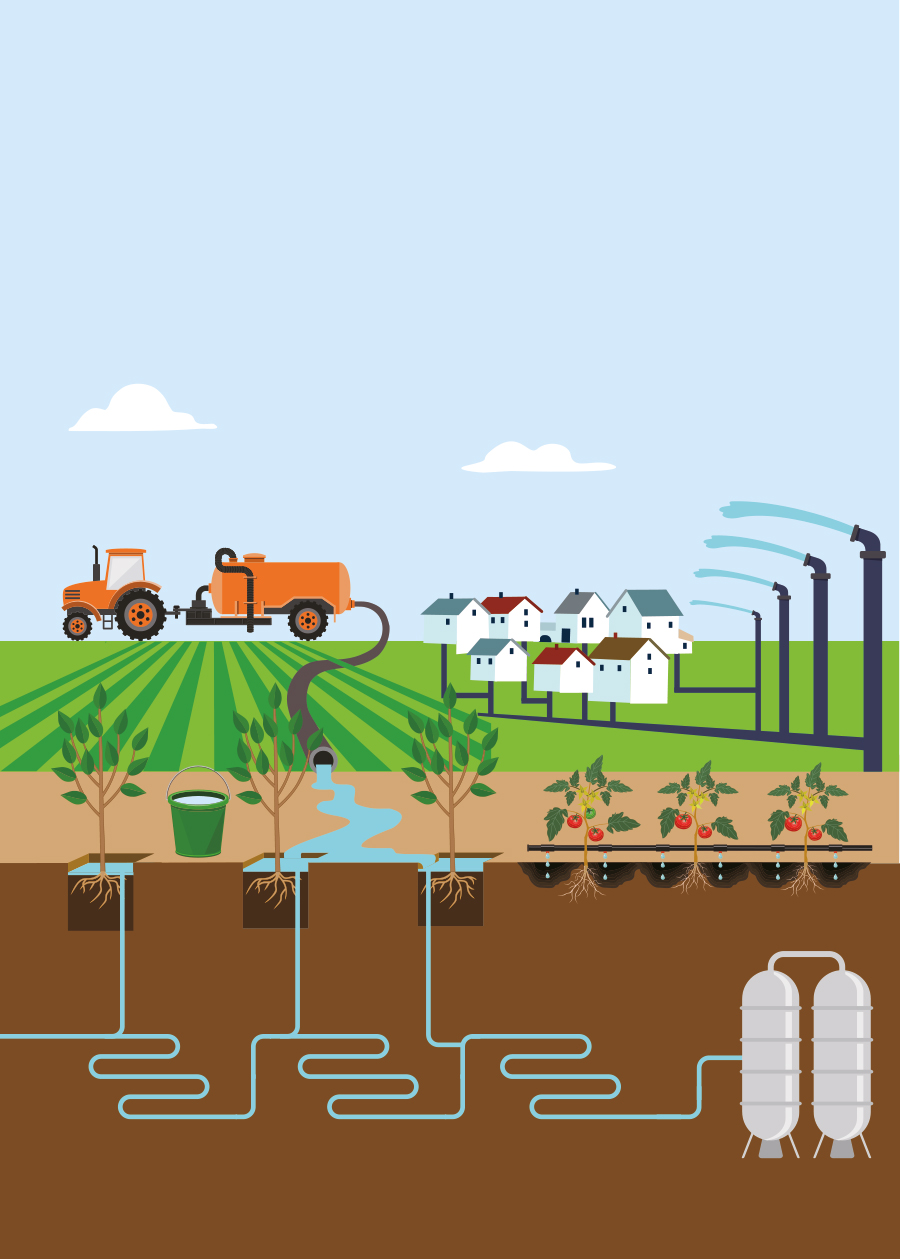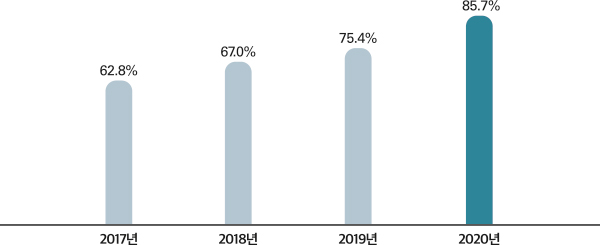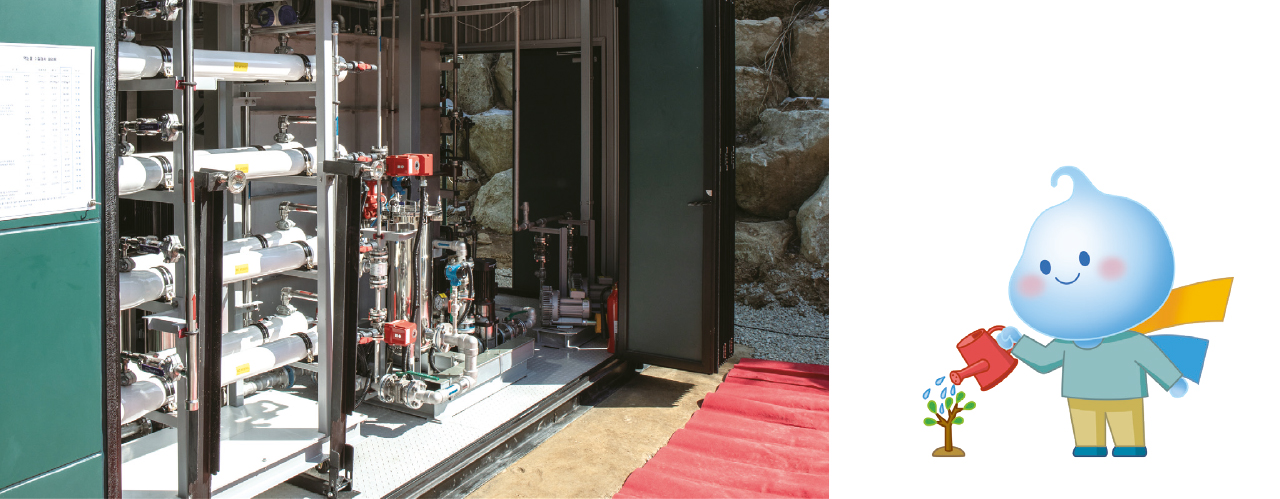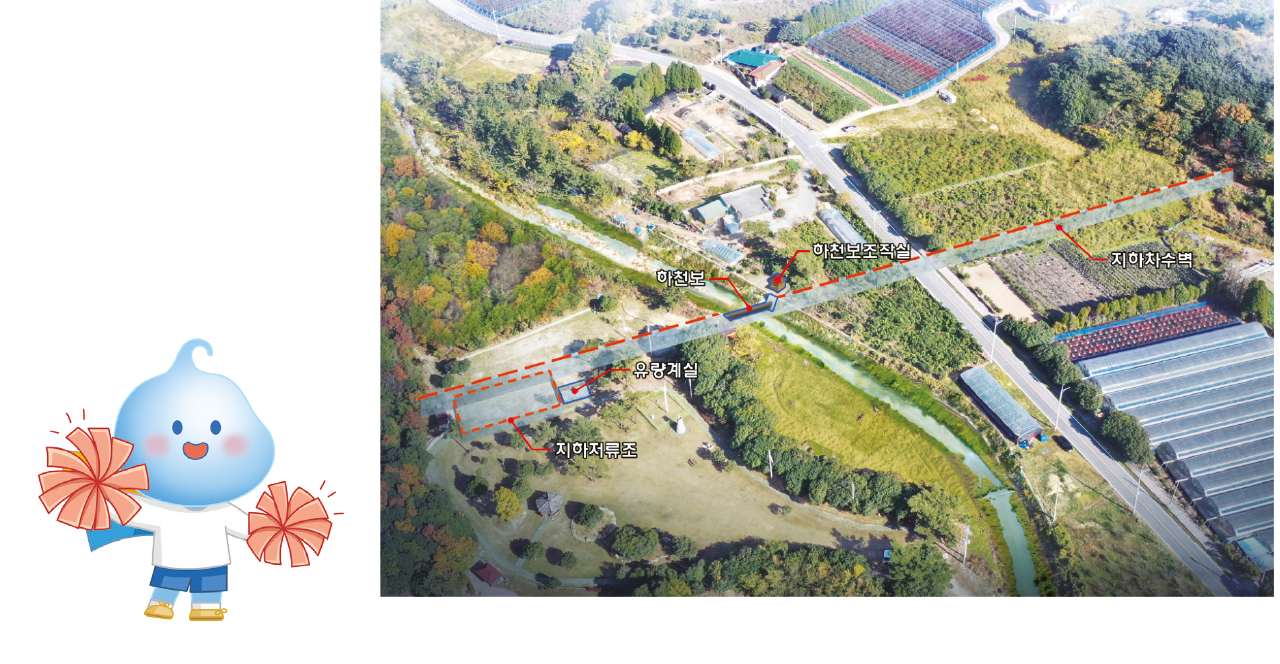
- Water, Nature and Humankind
- K-water Report
-
“K-water is committed to providing
the world’s first-rate water welfare.”
- Written by. Choi Hang-jwa
- Source by. K-water
- K-water has been striving to improve water welfare services, so that all people can be always supplied with clean, potable water. K-water endeavors to realize water welfare with water supply beyond regions, innovate the water supply system in water supply vulnerable areas, and improve regional-customized water supply facilities in order to create a happy Korea where water security is guaranteed.

Realization of water welfare with water supply beyond regions
Since the beginning of the history of Korea’s modern water supply system in 1908, the country has achieved remarkable growth in both quantity and quality of goods and services, and water supply welfare has been a critical public utility. According to the water supply statistics announced by the Ministry of Environment at the end of 2021, 97.5percent of the Korean population have access to running water(based on the population that is accessible to a wide area or regional water supply system in 2020), and the gap in the distribution rate between urban and rural areas also is continuously narrowing. These results are due to efforts of the government and K-water to improve public water welfare by achieving water supply equality between regions and increasing the revenue water ratio.
However, there are still water supply vulnerable areas in some remote areas. Therefore, K-water exerts a multilateral effort in earnest to provide the entire population, including 2percent of the population(1million people) in the water welfare blind spot by supplying safe and clean water to all.
K-water, which operates 48 wide area waterworks and is in charge of 48 percent(17.8 million ㎥/day) of Korea’s total water supply capacity, not only leads the modernization of the national water supply with ICT technology, but also realizes water welfare beyond administrative districts. In fact, this is because there are areas where differences in water welfare exist due to the division of administrative district borders, even though they are in the same life zone.
For example, Buntori Village in Jangheung-gun and Sanghabun Village in Gangjin-gun in Jeollanam-do share the same life zone across a streamlet, but Buntori Village receives the wide area water supply with abundant, quality water, while Sanghabun Village receives the village water supply, so water resource is insufficient due to draught and other factors.
In order to resolve this problem, K-water has signed the MOU for the connected operation of water supply facilities with Jangheung-gun and Gangjin-gun in November 2021. A working-level meeting was held in March in 2022 and from November, and Sanghabun Village will be supplied with clean running water through the Jangheung-gun’s water supply facility. Accordingly, as some 140 people of 87 households in Sanghabun Village have been stably supplied with water, its residents’ long-awaited wish was attained. The MOU for the connected operation of water supply facilities is heralded as an inter-regional cooperative model in which different regions share their waterworks beyond administrative districts and regional polarization of water supply services has been dissolved.
K-water plans to study optimal areas where their water supply problems can be solved through inter-regional water sharing, based on 22 national management entrusted and outsourcing groups and 75 local governments’ entrusted and outsourcing groups for modernization projects. Through this, it will continue to ensure residents’ water welfare, prevent duplicate investments through connected operations of water supply facilities between a metropolitan city and region or between regions, and prepare an inter-region water sharing model in order to expand measures to resolve water supply problems in these areas.
Achievement of increased revenue water ratio(based on the modernization project)

Eliminating the water welfare blind spots through water supply tailor-made for mountainous areas
Together with the Ministry of Environment, K-water is improving water welfare services through water supply customized to mountainous areas and others which have difficulties in receiving their local water supply. K-water signed the business agreement for improving the Army’s water supply facilities and environmental management for servicemen, and has been supplying clean water to some 30,000 residents in Bonghwa-gun, Gyeongsangbuk-do by securing a substitute water resource. In addition, it introduced the distributed water supply system to resolve water supply problems. The general water supply service is a supplier-focused “concentrated” system in which water is supplied to a city through a large water purification plant and water pipes using water from dams or rivers.
On the other hand, the distributed water supply system is a new system in which the final water treatment facility is built near to consumers. Thus, the establishment of the water supply facilities such as a purification plant is distributed based on the consumers. This helps water to be supplied according to a regional situation, and by building the unmanned remote control and monitoring system using smart technology, it helps resolving water quantity and quality problems in water supply vulnerable areas. At present, K-water is carrying out a pilot project to build a distributed water supply system, and the project is divided into the integrated and individual types depending on a regional situation.
The integrated type project aims to improve facilities at a certain scale that can be integrated to each other as the existing supply facility is close to a new one, and it targets a total of 27 facilities in four regions – Yangpyeong-gun in Gyeonggi-do, Inje-gun in Gangwon-do, Yeongdong-gun in Chungcheongbuk-do, and Gimcheon-si in Gyeongsangbuk-do. This pilot project is expected to resolve water supply problems for about 1,600 people.
The individual type project aims to improve facilities that cannot be integrated as the existing supply facility is far away from a new one. It targets Ansapjae Village in Inje-gun, Gangwon-do, where the individual type pilot project of the distributed water supply system was conducted, with this system built in March 2022.
Based on the results of pilot projects, K-water plans to introduce the project in stages after discussions between the Ministry of Environment and local governments, and continues to strive for improvement of water welfare services for water supply vulnerable areas.

Provision of water welfare through stable water supply in the coastal and remote areas
K-water carries out the project to improve water welfare for residents in coastal and remote areas, where people experience a water shortage frequently. According to climate conditions and regional characteristics including precipitation and groundwater developable quantity by region, K-water develops the customized facilities including an underwater reservoir and sea water desalination equipment to stabilize the water supply.
From 2002, started with Seosan-si, Chungcheongnam-do, K-water has been operating a sea water desalination facility by entrustment through three local governments – Boryeong-si in Chungcheongnam-do and Gunsan-si and Sinan-gun in Jeollanam-do. Thus, about 4,500 people in 25 remote areas benefit from this water welfare service, so that they benefit from quality water supply service with reduced water bill.
Notably, in December 2020, the first underground water reservoir among remote areas in Korea was built on Daeijakdo Island, Ongjin-gun, Incheon Metropolitan City, and another one on Anmado Island, Yeonggwang-gun, Jeollanam-do in December 2021. A new underground water reservoir is under construction on Bogildo Island, Wando-gun, Jeollanam-do, with its construction to be completed in December 2022. This will allow us to supply water(approx. 0.48 million ㎥ per year) to about 8,000 people in three areas. K-water will continue to build an eco-friendly underground water reservoir through the review and investigation of the areas for the project.
Furthermore, through the entrustment operation of the local water supply system of Wando-gun in Jeollanam-do from 2013, K-water greatly improved the revenue water ratio from 34 to 80.6percent in 2021. Due to constraints in accessibility to remote areas, it was difficult to choose the sludge operator at that time. Thus, K-water proposed and promoted the resident participatory sludge treatment system. In this process, an eco-friendly treatment system was introduced to recycle the sun-dried sludge as a filling material. As a result, the treatment of sludge has created an economic effect in which KRW 62 million per year is saved and the utilization of a regional(short distance) method leads to reduction of CO2 emission(7.216tCO₂ per year). K-water makes earnest effort to build a clean water environment together with Wando-gun residents, leading the way in the provision of public water welfare.
Aerial view of the underground water reservoir on Bogildo Island


